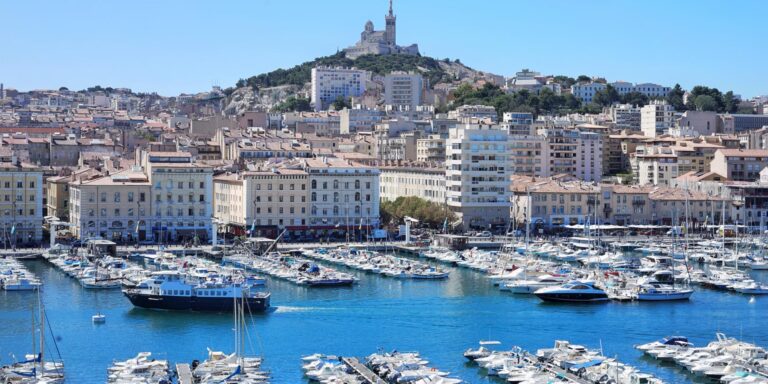Discovering Marseille: The 12 Best Things to Do and Essential Pitfalls to Avoid
As France’s second-largest city, Marseille is a vibrant tapestry woven with rich history, diverse cultures, and stunning coastal landscapes. From the bustling Vieux Port to the artistic districts of Le Panier, the city offers an array of experiences that cater to both seasoned travelers and first-time visitors alike. In this guide, we outline The 12 Best Things to Do in Marseille, highlighting must-see attractions and hidden gems that showcase the city’s unique charm. However, with its thriving scene also come potential missteps. In addition to the highlights, we will pinpoint the top things to avoid, arming travelers with the knowledge they need to navigate Marseille’s dynamic streets safely and enjoyably. Join us as we explore what this Mediterranean metropolis has to offer while steering clear of common pitfalls.
Exploring the Vibrant Old Port and Its Surroundings
Wandering through the Old Port of Marseille, visitors are immediately immersed in its colorful tapestry of history, culture, and seafood. This bustling hub, known as Vieux-Port, is not only the historical heart of the city but also a culinary paradise. Here, you can indulge in fresh bouillabaisse from local vendors while watching the boats bob on the water. For an authentic experience, take a stroll along the waterfront and admire the 16th-century Fort Saint-Nicolas, a reminder of Marseille’s storied past. As you venture deeper, don’t miss the chance to explore the vibrant market stalls, where local artisans showcase handmade crafts and delicacies unique to the region.
Surrounding the Old Port are several charming neighborhoods worth exploring. A short walk leads you to Le Panier, the oldest district in Marseille, characterized by narrow streets, colorful murals, and quaint boutiques. Here, you’ll find hidden squares and local cafes that seem to invite you to linger a little longer. Also nearby is the impressive MuCEM, the Museum of European and Mediterranean Civilizations, which seamlessly blends historical and contemporary architecture. With its panoramic views, the museum’s terrace offers a perfect backdrop for photography. Consider the following attractions when planning your visit:
- Les Terrasses du Port: Chic shopping experience with a view.
- La Canebière: Marseille’s iconic avenue, perfect for people-watching.
- Palais des Congrès: A hub for cultural events and exhibitions.
Cultural Treasures: Museums and Historical Landmarks to Visit
Marseille, a city steeped in history, boasts a variety of museums and historical landmarks that showcase its rich cultural heritage. Key attractions include the MusĂ©e des Civilisations de l’Europe et de la MĂ©diterranĂ©e (MuCEM), where visitors can explore exhibitions that delve into the diverse cultures of Europe and the Mediterranean. Another must-visit is the Palais des Congrès, an architectural gem that not only hosts various events but also offers a stunning view of the harbor. Don’t miss the Château d’If, the infamous fortress made famous by Alexandre Dumas’ “The Count of Monte Cristo,” which provides insight into the city’s past along with captivating scenic views.
For those interested in local art and history, the Musée des Beaux-Arts presents works from the Renaissance to the 20th century, making it a treasure trove for enthusiasts. Additionally, the Basilique Notre-Dame de la Garde, a stunning neo-Byzantine church perched atop a hill, serves as both a landmark and a spiritual center, offering panoramic views of the city. To make your visit smoother, here’s a quick tip on how to tackle these sites:
| Landmark/Museum | Recommended Time | Must-See Features |
|---|---|---|
| Musée des Civilisations | 2-3 hours | Exhibitions on Mediterranean culture |
| Château d’If | 1-2 hours | Historical prison, scenic views |
| Basilique Notre-Dame de la Garde | 1-1.5 hours | Stunning mosaics, panoramic views |
Culinary Delights: Must-Try Dishes and Local Markets
Marseille’s culinary scene is a vibrant tapestry woven from influences that reflect its rich history and diverse culture. One of the standout dishes you must try is Bouillabaisse, a traditional fish stew that encapsulates the essence of the Mediterranean. Made with a variety of local fish, shellfish, and aromatic herbs, this dish is often served with a side of rouille, a spicy garlic mayonnaise. Don’t miss out on sampling Panisse, a crispy chickpea fritter from the Provence region that pairs well with a chilled glass of local rosĂ©.
To truly immerse yourself in the flavors of Marseille, a visit to one of the bustling local markets is essential. At MarchĂ© du Rond-Point du Prado, you can discover fresh produce, local cheeses, and artisanal breads that reflect the region’s agricultural bounty. Another notable market is the MarchĂ© des Capucins, renowned for its vibrant atmosphere and diverse offerings. Here’s a brief look at some items you might find:
| Local Specialties | Description |
|---|---|
| Pastis | A traditional anise-flavored spirit that is a favorite aperitif. |
| Socca | A chickpea pancake, crispy on the outside and soft inside, perfect for snacking. |
| Navettes | Delicate cookies flavored with orange blossom, often enjoyed with tea. |
Avoiding Tourist Traps: Essential Tips for a Genuine Experience
Exploring Marseille offers a plethora of authentic experiences that transcend the usual tourist highlights. To truly immerse yourself in the local culture, consider venturing off the beaten path. Start by exploring the Le Panier neighborhood, known for its winding streets, vibrant street art, and artisan shops. Instead of dining at crowded, tourist-centric restaurants, opt for local bistros where you can taste traditional dishes like bouillabaisse or panisse. Engaging with local markets, such as the Marché des Capucins, allows you to sample fresh produce and artisanal goods that reflect the city’s diverse culinary heritage.
Another way to avoid tourist traps is to plan visits to attractions during off-peak hours. For instance, instead of hitting the Basilique Notre-Dame de la Garde during the day, consider an early morning or late afternoon visit when crowds are thinner, allowing for a more reflective experience and stunning city views. Additionally, steer clear of guided tours that promise quick sightseeing; instead, choose self-guided itineraries to explore Marseille at your own pace. This not only enhances your connection to the city but also uncovers hidden gems that organized tours often overlook.
Future Outlook
In conclusion, Marseille offers a vibrant tapestry of experiences, from its historic sites and stunning coastal beauty to its diverse culinary scene and lively cultural landscape. As you plan your visit, keep in mind the highlights—from the breathtaking views at the Basilique Notre-Dame de la Garde to the bustling markets of Le Panier. However, it’s equally important to navigate the city wisely by steering clear of common tourist traps and being cautious in less-traveled areas. With these insights, you can make the most of your journey through this dynamic city. Whether you’re a seasoned traveler or a first-time visitor, Marseille promises a unique blend of adventure and discovery that is sure to leave a lasting impression. Safe travels!




